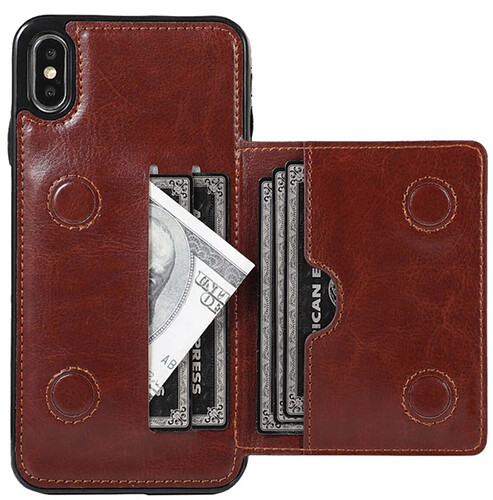I am building a simple picture file that has functions equivalent to the camera and photo storage / presentation functions of iOS and Android. The intent is to:
-
Learn how to build an app where access is limited by password so that data for different users is separated and access controlled.
-
Learn how to build an app that handles records which can be added, deleted and modified by the user, and
-
Build a very simple app that will allow me to cut down on the number of cards I need to have in my wallet. My son shamed me when he saw my thick wallet with all of these infrequently used cards that serve just as pretty images. This of course excludes all of the cards with chips in them – but that is what Apple Pay is for. I have a new case (from https://www.casebus.com/) for my iPhone that can hold two physical credit cards and some cash.
(Forget about wireless charging with this case. . ) Everything else will have to travel on the phone as images. I looked around and couldn’t find an app that just implements these very simple activities – sure there were lots that did a lot more, but I don’t want that.
. ) Everything else will have to travel on the phone as images. I looked around and couldn’t find an app that just implements these very simple activities – sure there were lots that did a lot more, but I don’t want that.
So, Glide to the rescue. In the true spirit of Glide, I will just build it myself.
I have done some of the early stuff and you can see what I have at https://cardholder.glideapp.io/
As I said, this is intended to be very simple. Right now I have left it open, but the next thing I will be doing is to turn on the access control.
But there are already a couple of questions I’ve run across:
-
I am using the image picker to gather the photos of the card’s front and back. This works fine on my iPhone, but when I try it on my Mac Chrome browser, all I get is a finder that pops up and lets me select a file. Since I find that sometimes it is best to populate and manage these cards from my laptop, and I find that people expect to have the same functionality on a laptop and a smartphone, are there any plans to implement an interface to the laptop’s camera and perhaps a popular image cataloger on the laptop such as Apple Photos for Macs or MSPhotos for Windows (note: I am not a Windows user, so I don’t know the most common program used for cataloging and viewing photos on a Windows machine).
-
Here is the “add new card” screen:
-
After I take a picture of the front of the card, here is what I see in the normal display of the card (i.e., not the editing interface):
The question I have is why is the image picker item visible, and is there currently a way to get rid of it. I looked for at the standard options visibility interface and didn’t see any way to make the image picker not appear in standard presentation mode. -
Of course I’d love to stay in Glide and do a little editing on the photo of the card (such as rotate and crop it), but I’m not sure how to do those functions totally in Glide or even reaching out to a helper app.
Even with all of these little nitpicks, I must say I am impressed at how easy it has been to build such an app once I learned several new skills as I mentioned at the top of this message.
Thanks,
– Harry


